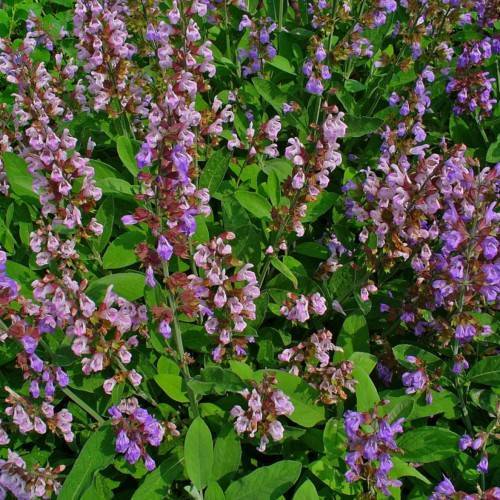
common sage
Salvia officinalis 'Nana'
Cycle:
Herbaceous Perennial
Watering:
Minimum
Hardiness Zone:
4 - 8
Flowers:
Flowers In Summer
Sun:
Full sun
Leaf:
Yes
Growth Rate:
Low
Maintenance:
Moderate
Drought Tolerant:
Yes
Salt Tolerant:
Yes
Care Level:
Medium
watering
Common Sage should be watered when the top 2 inches of soil feel dry to the touch. Approximately once a week should suffice. Water thoroughly, making sure to moisten the entire root zone. Avoid watering too frequently as this can cause the roots to become waterlogged, which can lead to rot and death. Allow the water to absorb and the soil to dry slightly between watering to ensure the best results.
sunlight
Common sage (Salvia officinalis 'Nana') plants thrive best in full sun during the spring and summer months. If grown in partial shade, plants may be more susceptible to disease and may not reach their full potential in terms of flowering. For optimal growth and flowering, common sage should receive direct sunlight for a minimum of 6 to 8 hours per day. During the winter, the plant should receive at least 4 hours of sunlight each day to remain healthy. Planting common sage in areas with good air circulation can also help to keep the plant healthy and productive.
pruning
Common sage should be pruned lighty each spring. For a more pronounced aesthetic, more drastic pruning can be done at the end of the growing season in late summer/early fall. This will ensure that the plant will not get too big or out of control. When pruning common sage, make sure to cut off any stems that are straggly, crossing, damaged, or diseased. Also, remove any flowers that are past their prime. Finally, trim back any stems that have grown more than the desired size by up to 30%. Make sure to keep the remaining leafy stems about 8-12 inches in height. This should be done annually with common sage to ensure it stays tidy and healthy.
